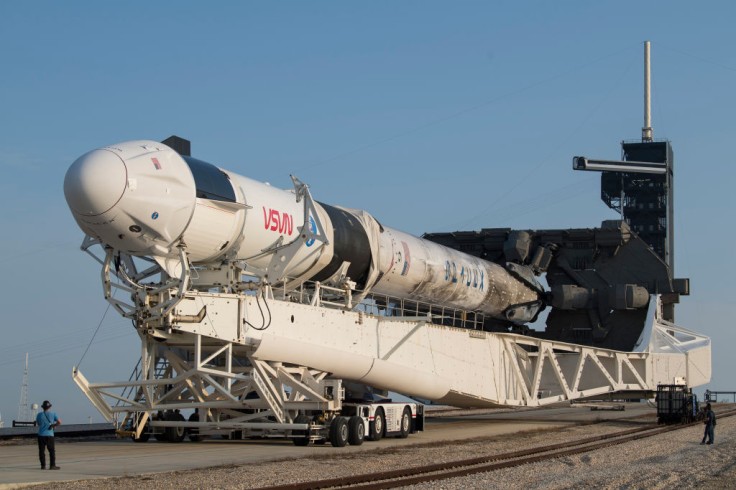
SpaceX has had multiple missions since 2002. Aside from their Commercial Resupply Services missions for NASA, it has also been busy with their own missions like the Starlink launch and the Starship flight.
The company wants to make space exploration available to the public. In its website, it quotes CEO Elon Musk saying that humans are a "spacefaring civilization," going out there "and being among the stars."
If you are a fan of the rockets, then you would probably want to see the SpaceX rocket launches. The company just launched their fifth Dragon capsule cargo on their new Falcon 9, heading to the International Space Station (ISS) on Thursday, June 3. here's how you can rewatch it and the company's other launches in the past.
SpaceX Falcon 9 Dragon Launch
This launch is the 22nd Commercial Resupply Services (CRS) mission SpaceX has conducted for NASA. It is also the second mission under SpaceX's new CRS contract with NASA, with the first one taking place last December, according to TechCrunch.
However, this is the first Dragon launch they've done with their new Falcon 9 rocket booster.
The CRS-22 was launched from Launch Complex 39A (LC-39A) at 1:29 p.m. EDT, SpaceX said. TechCrunch noted that the launch was right on schedule despite the threat of storm clouds from both the south and the east.
The planned first stage separation was a success and the Falcon 9 touched down on the "Of Course I Still Love You" droneship in the Atlantic Ocean. This was eight minutes after the launch, according to TechCrunch.
At the 12-minute mark after the launch, the second stage which separates the Dragon happened as the rocket took it to orbit.
The Dragon will autonomously dock on the International Space Station on Saturday, June 5, according to SpaceX.
The Falcon 9 has also launched 10 Starlink satellite missions. The Starlink "constellation" is still currently in its beta testing mode and SpaceX is planning more missions to reach its goal of providing wi-fi to every corner of the globe.
Read also: SpaceX Starlink Satellites Location Tracker: Where and When to Find Its Train of Lights in the Sky
The Dragon is reportedly sending more than 7,300 pounds of research materials, supplies, and hardware to the ISS crew.
The capsule is also carrying a number of research experiments that are to be conducted on the ISS. These include oral bacteria to test germ growth with Colgate toothpaste and a number of water bears, or tardigrades which are primordial organisms that will attempt to fare and reproduce in pace environments.
Even a study that investigates the effects of microgravity on the formation of kidney stones which many crew members have displayed an increased susceptibility to during space flight is sent up to the ISS. Who knew space crew had to worry about kidney stones?
Fresh food will also be delivered by the Dragon, and the crew will be enjoying their fresh apples, navel oranges, lemons and avocados.
A 3,000-pound roll-out "flex blanket" solar array developed by Redwire, a space infrastructure company, is also heading to the ISS.
As opposed to more traditional rigid paneled solar arrays, flex blanket technology "provides more mass and performance benefits," Matt LaPointe, Redwire technical director, told TechCrunch.
This is the first of three missions to send iROSA solar arrays to the station. Each mission carries two arrays which are placed in the Dragon's unpressurized trunk. Once installed, the six iROSA arrays will collectively produce over 120KW of power, Redwire claims.
The new iROSA arrays will improve the ISS's power generation by 20-30% the company says.
Where to Rewatch SpaceX Falcon 9 Dragon Launch, Starlink
Starlink is a string of satellites orbiting the Earth, with the aim of providing high-speed, low-latency broadband internet. In its beta run domestically and internationally, SpaceX expressed hope to "continue expansion to near global coverage of the populated world in 2021."
The "constellation" is expected to compose of 42,000 satellites to provide internet access all over the world, according the Market Research. Currently, there are 1,500 satellites in orbit, and updates are done in every launch mission to improve bandwidth and other properties of the satellites themselves.
In this year alone, SpaceX has had 12 Starlink missions, according to their website.
The space company has also been conducting flight tests for the Starship prototypes.
The said high-altitude flight tests wants to improve SpaceX's development of a fully reusable transportation system "designed to carry both crew and cargo on long-duration interplanetary flights, and help humanity return to the Moon, and travel to Mars and beyond," they wrote on their recent article on the successful flight test last May 5.
The SpaceX Falcon 9 Dragon launch can be watched again on SpaceX's YouTube channel. SpaceX has also uploaded their other launches like the Starlink missions on their channel and website here.









